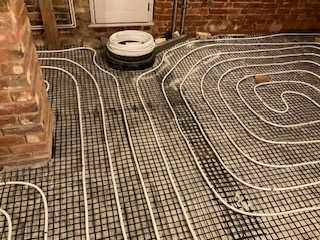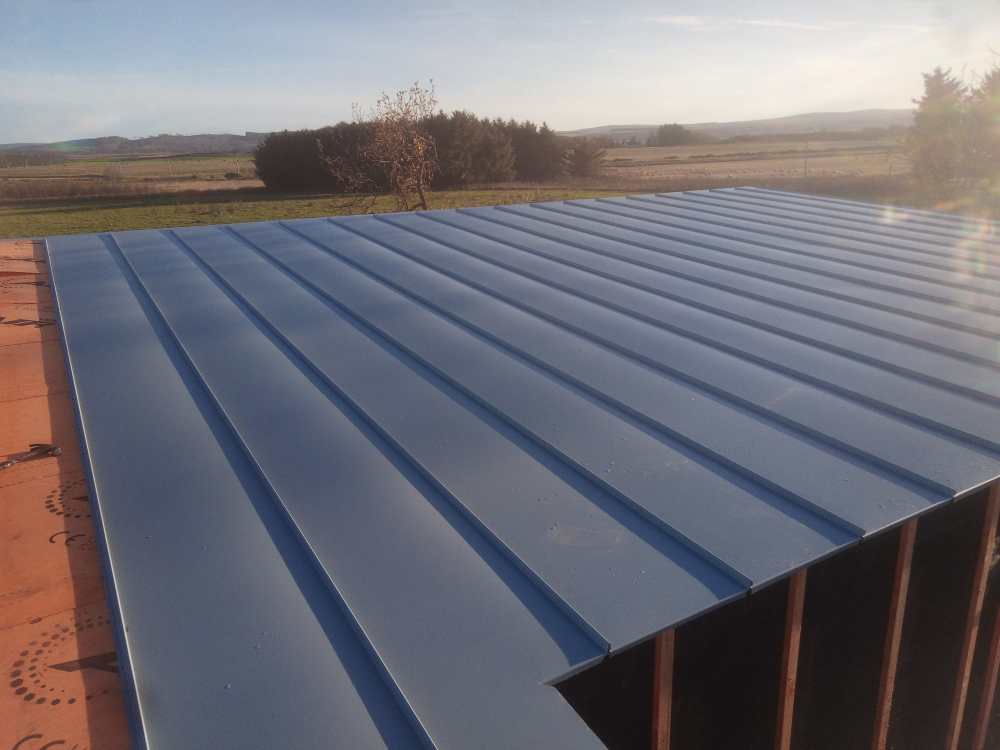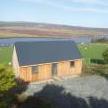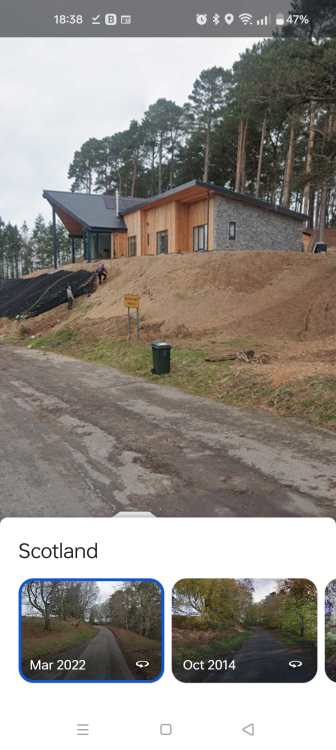Leaderboard
Popular Content
Showing content with the highest reputation on 11/12/24 in all areas
-
Winner winner chicken dinner ! Sent an appropriate email about poor service , lack of work required list after bco viewings etc etc etc Said once I get the G3 thing in then all passed and completion certificate issued . @ToughButterCup just checked the dictionary.. Legend = Pocster Pocster = ( see Legend ) .8 points
-
Are all you electric cables wired in to a modern consumer unit with RCBOs etc? Then I'd argue the risk of electrical file is minimal and if the ceiling is 30min rated then you're golden. We've only painted two of our steels, the main mezzanine steels are protected by 30min rated ceiling. The point of fire protecting steels is to ensure that the building stays up long enough for escape. A smouldering electrical cable isn't going to bother an RSJ.2 points
-
Surely if covered in a 30 min fire retardant ceiling the steels are not exposed ? Was this not specified in your architects drawings? What does your ceiling consist of?2 points
-
Ive used it, and your description of "shoggled" is about right. Its nothing like whacking down type 1. Significant voids or gaps remain afterwards. A geotextile membrane was then laid before concrete/lime crete. If you didnt, the voids are such that the concrete would fall down into the voids, negating its insulating properties. The main reason i used it aside from being "breathable" (old house) if i can use that term is that it reduced excavation as it is both the sub base and insulating layer combined. Im not one for taking pics, heres a shot with geocell, membrane and heating pipes down1 point
-
Thanks for all your help, John. The Stanley had a huge boiler, so that could explain the difference. A higher vent would be difficult, but not impossible, so I'll give it a try. Thanks again John1 point
-
1 point
-
1 point
-
Sounds to me as if that needs no further treatment. What is behind the ceiling that might burn? I would need to know the steel section reference. I'd be cheeky and ask bco to answer the query from your fire engineer: what risk he perceives (where is the fuel behind the ceiling and the likely ignition. Given the HP/A why does he think it needs more protection.?1 point
-
1 point
-
Says it all really, let them crack on. (At their expense of course)1 point
-
So, eating bacon sandwiches, while watching the F1, in front of the log burner - is very bad... That's me done for then.1 point
-
We have only a house name . It is an isolated house with no neighbours. The lane has no name, and we are not in a village or even a hamlet. The locality name is a mansion 2 miles away, and the "city" is a small village 5 miles away. The county postal address is not the same as the geographical one, and the sorting office is in a third county 10 miles away. I have lived here for 40 years, and in that time the Post Office have changed the address and the post code 3 times. Only the house name has remained constant, since at least 1780. No insurance problems.1 point
-
1 point
-
I think it's hard to persuade the general public that burning wood is bad, in the same way that it's hard to convince people that eating bacon is bad. If humans have been doing something forever, surely it can't be that bad? Unlike those newfangled heat pumps and EVs which are clearly not to be trusted.1 point
-
Get the wheelbarrow ! Why ? Got to get my extra large testies in there ! Legends aren’t born . They are made ! Party !! Legend ! 🍾🍷 Party on !!! L-E-G-E-N-D !1 point
-
1 point
-
1 point
-
If you remove the vent then the now combined feed & vent must be 22mm with no isol. valve. What is the height roughly from the F&E cistern water level to the pump and what is the pump set to, speed 1,2or3?. If that height is greater than the pump head, then the pump suction could possibly be running at a negative head and eventually pulling air in, for example if the distance is say 3M and the pump head is 4M, then the pump might be running with a negative suction head of 1M. Anyway try the glass test and give a rough idea of the height and pump speed. Did you have a gas or oil fired boiler previous to the change?1 point
-
I have used Finish Architectural in the past for ali cills. Good firm.1 point
-
The means of escape via other doors and low voltage wiring might be accepted by the BCO, worth a try I guess. Yes un vented tank will require sign off (tho my BCO forgot to ask for mine),1 point
-
I recently (over the last year) renovated my house - 1920's semi with 65mm cavity, I had grand plans of insulation everywhere - doing EWI & IWI. Any way, long story short I worked out that loads of insulation is overrated in our climate - law of diminishing returns. 300mm of loft insulation, cavity wall insulation if you can and if you've got suspended timber floors and happen to be doing work there do so. Beyond that, I'd go so far - controversially as saying don't bother. Exceptions would be thermal bridges that would cause condensation. Sort the ventilation strategy. Ultimately insulation doesn't *make* you warmer - it means the space loses heat slower, you still have to heat the space (caveats apply to that broad statement around thermal bridging / uneven insulation across elements) The focus then should be heat pump system designed to the lowest flow temperature you can (<40c) and is weather compensated. This is where you would get the comfort and lower energy bills. Save your money for a well designed heating system.1 point
-
It may or may not be. You @Pocster are a legend. We all know that, you know that. But the BCO doesn't. Convince him of your legendary status as somebody who conserves energy - nervous energy - and just bloody does it instead of worrying about it. Better put JustBloodyDoIt - JBDI1 point
-
Buy the cheapest ones you like the look of. Even the soft delabole slates down here last a few hundred years. But have a look at the integrated PV, it may work out cheaper than slating.1 point
-
The training day is well worth it. Cardiff is the only location I think. unlike other companies catnic still supply this for free. I was rather peed off that after spending £20,000 with an icf company they then wanted £180 for a training day.🤬1 point
-
Just teasing a bit here. https://scitechdaily.com/eco-friendly-fibers-may-pose-a-greater-threat-to-the-planet-than-plastics-concerning-study-reveals/1 point
-
My first solar powered Reolink camera failed due to the antenna becoming disconnected. My second one is fine but hasn’t charged in the last 2 weeks due to the weather I guess.1 point
-
You will need a toggle type fixing, pretend the door is a thin hollow wall.1 point
-
Reduce to 25mm MDPE. You can then fit a 25mm tap. You don't need 32mm for a site supply. Do you need a double check valve? Surely if this is a new connection you'll have a modern meter box with integrated non return valve?1 point
-
IMO The foam behind will deal with the expansion and the scrim and plaster form a bridge over the pipes, just SBR the walls/plaster to grip both sides. No need for the pipes/duct tape to stick to the new plaster.1 point
-
Hard to tell from the pictures but it could be something like sarking boards with 20mm chips. You'd want a membrane underneath to prevent weeds from growing through. And ideally you'd be laying the whole lot over a good firm surface, like type 1. You can bed the boards in to type 1, packed down in little trenches.1 point
-
We sculpted out a hill quite a bit more extreme than yours. So anything is possible. Formed out a platform for the house to sit on, moving many thousands of tonnes, but took nothing away from site Retaining walls were done with gabions near the house, and wooden strainers elsewhere (8" wooden posts) A before and after1 point
-
must be plenty of derilict stone buildings to get stone from build with that maybe like a drystone wall but with mortar and then coat it with render in and out and an insulted internal structure how ever you like ,with a cavity stone lasts forever I am presuming this will be a self build ,so buidling instone you can stop and start as you like and build as time allows1 point
-
Don’t do it, silly idea, leave it to the idiots on some random tv programme. there are far better building methods out there. and far better things to use regarding your location.1 point
-
This is a classic mathematics problem. One of the most practical uses of differentiation is finding the maximum or minimum value of a real-world function. In the following example, you calculate the maximum volume of a box that has no top and that is to be manufactured from a 30-inch-by-30-inch piece of cardboard by cutting and folding it as shown in the figure. What dimensions produce a box that has the maximum volume? Mathematics often seems abstract and impractical, but here’s an honest-to-goodness practical problem. If a manufacturer can sell bigger boxes for more money, and he or she is making a million boxes, you better believe he or she will want the exact answer to this question: Express the thing you want maximized, the volume, as a function of the unknown, the height of the box (which is the same as the length of the cut). Determine the domain of your function. The height can’t be negative or greater than 15 inches (the cardboard is only 30 inches wide, so half of that is the maximum height). Thus, sensible values for h are 0 ≤ h ≤ 15. Find the critical numbers of V(h) in the open interval (0, 15) by setting its derivative equal to zero and solving. And don’t forget to check for numbers where the derivative is undefined. Because 15 isn't in the open interval (0, 15), it doesn’t qualify as a critical number. And because this derivative is defined for all input values, there are no additional critical numbers. So, 5 is the only critical number. Evaluate the function at the critical number, 5, and at the endpoints of the interval, 0 and 15, to locate the function’s max. The extremum (dig that fancy word for maximum or minimum) you’re looking for doesn’t often occur at an endpoint, but it can — so don’t fail to evaluate the function at the interval’s two endpoints. You’ve got your answer: a height of 5 inches produces the box with maximum volume (2000 cubic inches). Because the length and width equal 30 – 2h, a height of 5 inches gives a length and width of 30 – 2 · 5, or 20 inches. Thus, the dimensions of the desired box are 5 inches by 20 inches by 20 inches.1 point
-
Yes, I thought that sounded a bit too good to be true - but I'd expect a bill to land in the post box. When/how that gets paid is up to the Gods0 points
-
Just spoke to Rawlings . They won’t issue a certificate unless a professional contractor has applied it . Not for “ diy “ use ….0 points
-
Further listening to his conversation suggests the concern was fire say by cabling above the ceiling and below the steels . Going to find steel spec0 points
-
In our case the initial purpose will be a gym and workshop, with a corner hived off for a shed (with that section having its own door). However, I would like to build it to last and it to feel good and solid (yes, over engineered). So that gets us a basic sort of spec/plan. Then I scratch my chin and think, “with just a little extra effort and cost I could make it…..”. Repeat that exercise enough times and I have a plan for an expensive building with the potential for easy conversion to a guest suite (I am not sociable and billeting guests at the far end of the garden appeals) or carers accommodation (we plan ahead). Not so much requirements ‘creep’ as ‘gallop’! So, day one it needs a floor as steady as a normal indoor floor. A bit of insulation would be nice but it isn’t really essential, but fitting it later would be a lot harder. A potty would be handy, but difficult as evidenced in other threads due to the fall of our site and the fact that inexplicably, none of the neighbours have offered to let me dig up their gardens and connect to their sewers. It needs lecky, as large TVs (essential for rowing, naturally) don’t run themselves and I’ve an 18v Makita obsession to constantly recharge. Now, all this seems a bit over the top. Until you factor in the presence, literally 250m away, of a leisure centre with gym, pool, steam room and sauna that I almost certainly will be a member of anyway. Then it becomes downright silly. But I still wants it, precious.0 points
-
I think you have answered your own question pretty definitively! If it ain't broke and all that...0 points




















